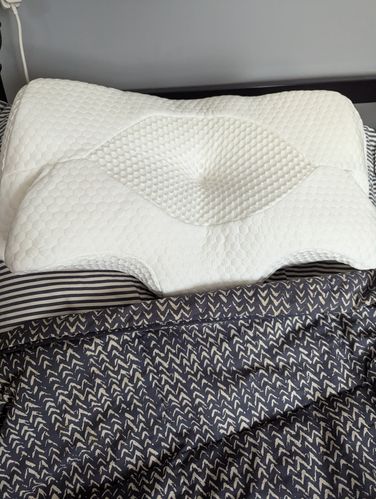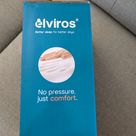- Fill material: Memory foam
- Outer cover material: Yes. Machine-washable
- Firmness level: Dense but comfortable
- Available sizes: Three (standard, Queen and King)
- Price on publish: $46.00
Best Pillows for Neck Pain, According to Experts

Our evaluations and opinions are not influenced by our advertising relationships, but we may earn a commission from our partners’ links. This content is created by TIME Stamped, under TIME’s direction and produced in accordance with TIME’s editorial guidelines and overseen by TIME’s editorial staff. Learn more about it.
If you suffer from neck pain or find your neck stiff and sore in the morning after sleeping, you may want to replace your pillow and consider how you sleep through the night.
“Managing neck pain at night all starts with the right PILLOW,” says Dr. Jimmy Pajuheshfar, PT, DPT, and clinical director at FYZICAL Therapy & Balance Centers in Whitney Ranch, Nevada. “The pillow type and positioning make a big difference in neck comfort both during sleep and upon waking in the morning.”
There are a few factors to examine when picking the right pillow, especially if you suffer from neck strain or pain. We’ve rounded advice from physical therapists and sleep experts to help you select the best pillow for neck pain and avoid discomfort during slumber.
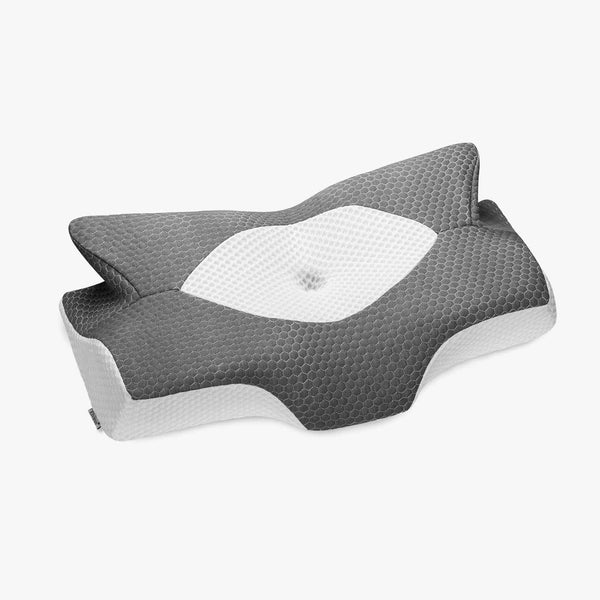
If you want a slightly softer therapeutic pillow than the one above, I recommend the FlutterShape by Elviros. Because it is made from high-density memory foam, it doesn’t feel stiff on your neck, head, or shoulders but cushions you while you sleep.
It has an ergonomic curved design (like most cervical pillows), but because of the fabric’s cushion, it doesn’t feel awkward to lie down on, like some cervical pillows.
It is designed for side or back sleepers like me, and I felt the standard size (for me) kept things aligned and comfortable while I slept. The pillow is available in three sizes and has a removable cover, so you can wash it easily. I also loved that it is CertiPUR-US certified and Oeko-Tex approved–which means there are no toxic materials and it is hypoallergenic.
If you need a cervical pillow for neck, spine, shoulder, or back pain, this high-density memory foam pillow is non-toxic, comfortable, and affordable.

This pillow is made from neck-friendly memory foam and was specifically created to reduce neck pain. You can buy them in standard or queen size, and they come with a cover to keep dust and dander away. This pillow received over 15,000 five-star reviews on Amazon, and users say it successfully kept neck pain at bay.

This firm orthopedic pillow, created by an ergonomic designer, follows the contours of your neck and offers a stable base of support for sleep. Designed to restore the curve of your neck while sleeping, this probably isn’t a pillow your kids or partner will want to cuddle up with, but if you suffer from pain and don’t mind an extremely firm surface, it’s worth asking your doctor about it.
An important point worth noting, though, is that the company specifically states that your body “may need time to adjust to a corrective pillow,” and you can run the risk of increased pain as your body adjusts to it. Be sure to read Therapeutica’s sizing guide (there are four sizes available) and take advantage of its videos on proper sizing to select the best and correct size pillow for you.
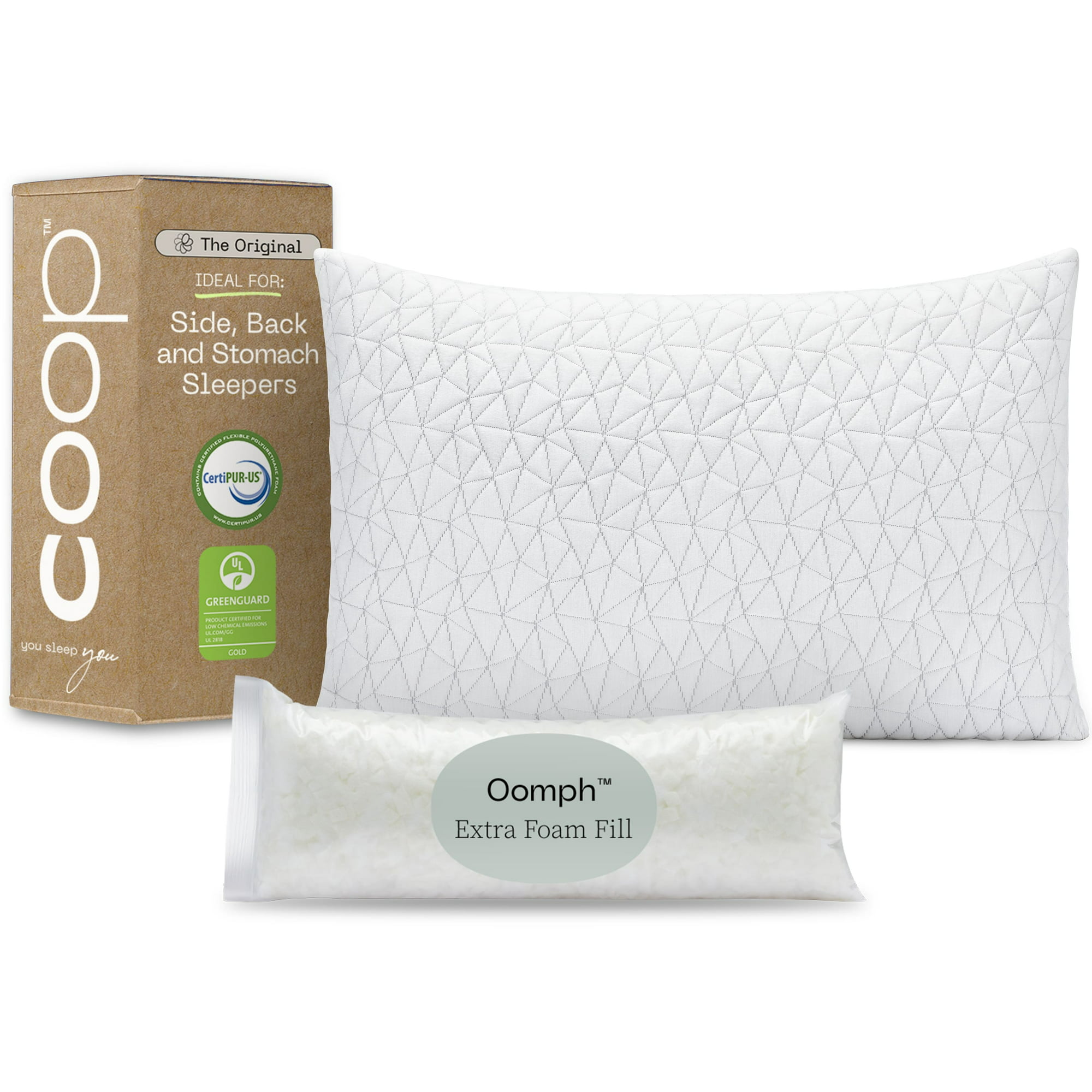
Approximately 38% of the population sleeps on their backs, so it makes sense that there are pillows like this designed for them. We love this Coop Home choice because it’s good for spine alignment and made from eco-friendly materials (hypoallergenic), plus you can throw its cover in the washing machine. Note: It’s recommended that you wash your pillows regularly, and if you suffer from neck pain, keeping pillows in the best shape possible is important.

Designed for stomach sleepers, this down pillow from Brooklinen can be customized for a good night (and hopefully pain-free rest) due to three different options for fill–plush, mid-plush, and firm. Brooklinen recommends stomach sleepers pick up the Plush pillow. If you sleep both on your stomach and side and need more support, the Firm version may be for you. We love that the pillow’s loft can be compressed, which makes it good for stomach sleepers who may need a flatter surface than side sleepers.
A customizable pillow with easy compression that works great for stomach sleepers.
For more pillows for stomach sleepers check: Best Pillows for Stomach Sleepers According to Experts
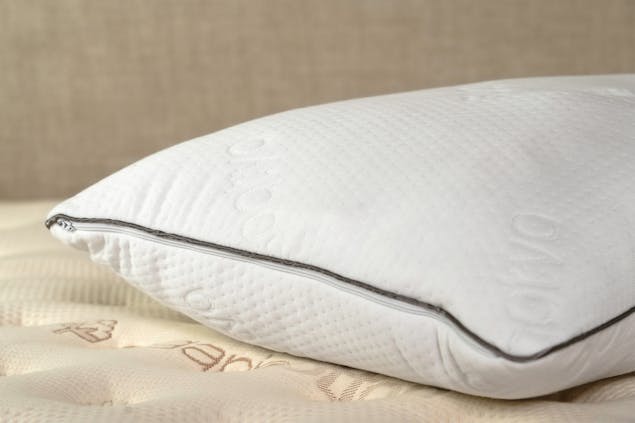
“The best pillow for side sleepers offers support for your head and neck without being too firm,“ says Golub. “The objective is to fill the gap between shoulder and head, so the neck stays aligned with the spine in a neutral position.” If you sleep on your side, this memory foam pillow can help you keep your neck aligned due to the buoyancy of its latex contours and shredded gel-infused CertiPUR-US® certified memory foam. Looking to replace your mattress? Check out our list of the best mattresses for side sleepers.

This pillow provides head and neck support for all types of sleepers. It is made with a durable three-layer construction, and you can choose between two loft heights, standard (4 inches to 5 inches) or high (6 inches to 7 inches), to best support your body type. It’s designed to work with all sleeper positions, so if you toss and turn in the night without sticking to one position, this may be the pillow for you. Shopping tip: The Saatva Classic Mattress made our list of the best mattresses for back pain, if your pain extends beyond your neck.

The Boll & Branch Down Chamber pillow is good for sleepers fighting neck pain because it can be purchased in three density options for different needs of support: Soft, Medium and Firm. If you’re looking for adjustable down, the three-chamber design provides it in the Soft density, and the other two, Medium and Firm, are filled with a supportive feather and a down inner pillow surrounded by an additional soft layer of down.
This eco-friendly down pillow comes with a 100% organic cotton shell cover. We love that these pillows are soft enough for cuddling, but firm enough for keeping your head and neck in alignment. However, if you’re looking for the best option for neck pain, we suggest trying the Firm style of this pillow.

Memory foam and latex cushions are often recommended when it comes to preventing a stiff neck, because these materials contour to the sleeper’s head and neck, reducing pressure points and supporting spine alignment. Tempur-Pedic’s Cloud rates highly for its adaptable foam in two loft sizes (4-inch or 5-inch) for different body types. If you have allergies, you’ll be happy to learn that this pillow is not only hypoallergenic, but contains copper-infused foam with antimicrobial benefits to protect you from allergens, mold, and dust mites.
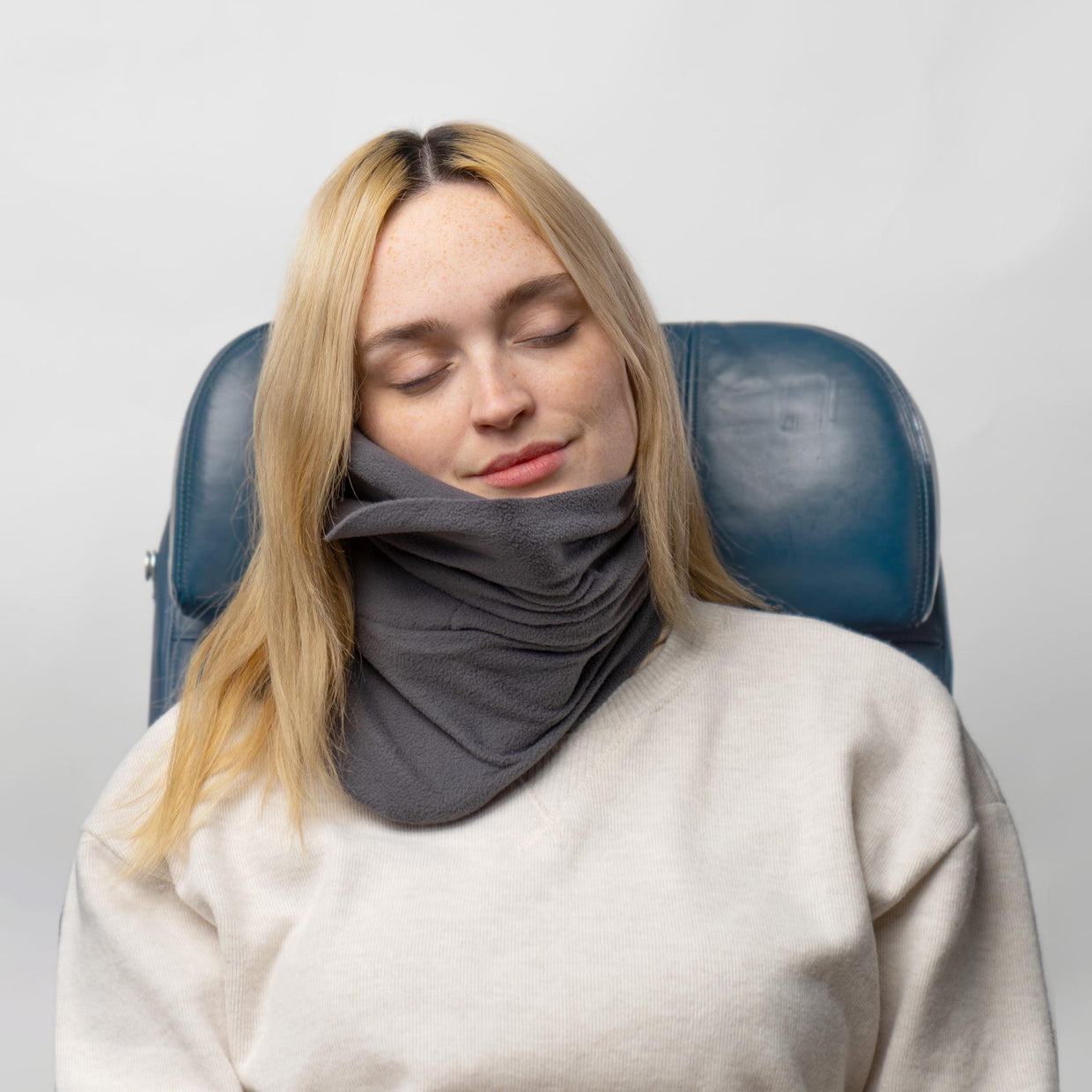
Falling asleep on a plane, train or automobile (we’re assuming you're the passenger in this scenario) and waking up with a stiff or painful neck may be an unfortunate risk of travel. If you try this pillow out, you may find yourself pain-free when you arrive at your destination. The TRTL travel pillow is specifically designed to support your neck, head and spine when you have to sleep sitting up. It may look more like a scarf than a pillow, but this is no gimmick, and with over 10,000 five-star reviews, it’s definitely worth giving a try on your next vacation.
What helps it stand head and shoulders (pardon the pun) above the rest is its ergonomic position (holding you into a comfortable position) that takes into account your neck shape, jaw and shoulder, versus the traditional U-shaped travel pillow.
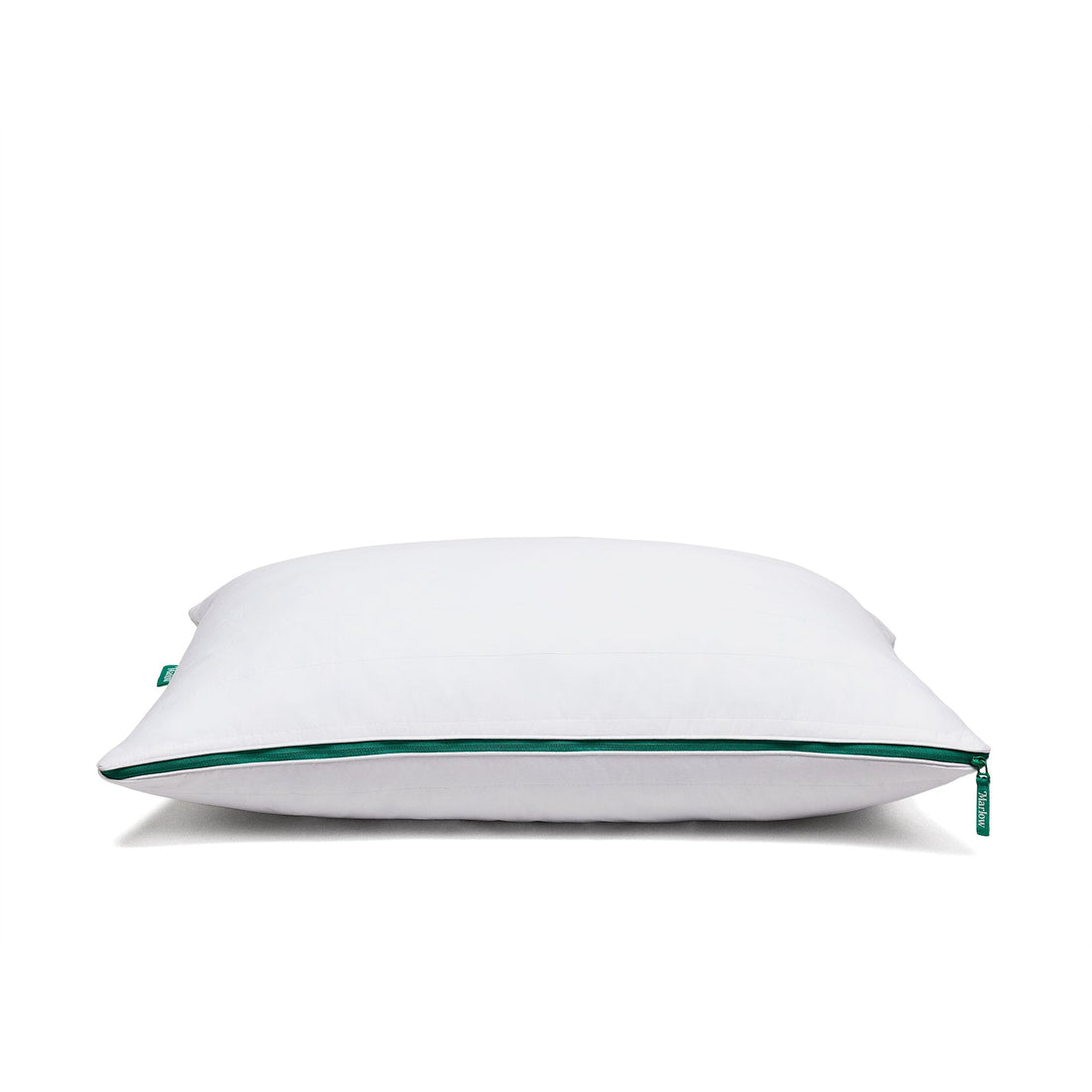
The Marlow is (NASA) engineered to help prevent neck and back pain with its balance of memory foam and microfiber. We love this pillow for just about anyone, but if you have neck pain, this adjustable pillow with cooling-gel properties may be a good choice.There are three loft profiles, plus two zippers to make adjustments simple and quick for customized comfort.
Neck pain is a common complaint among Americans–in fact, up to 20% of the people around you are dealing with it. While neck pain isn’t always caused directly by pillows, an uncomfortable pillow may not help with good rest if you have neck pain.
“Root causes of neck pain are 99.9% of the time generally related to a combination of lifestyle factors like stress, injury, diet, etc. versus their relationship to pillows,” says Tawny Kross, CEO, pain specialist and doctor of physical therapy at Kross Centered Care. “However, if someone has neck pain, pillows that encourage neutral alignment (like a contour pillow) can be helpful and less aggravating to the neck.”
Below are some of the things you should think about when choosing a pillow:
The loft is the compressed height of the pillow when you lay down on it. Usually, pillows come in low, medium, or high loft.
Each pillow loft differs by inches:
This level will depend on what your pillow is made of—down feathers will feel less firm than dense foam, for example. Dr. Kross shares that a “semi-firm” pillow may be a good choice for sleepers. should check your mattress, though,, because its density may impact how your pillow lays on it.
The common materials that make up pillows may include synthetic fill, organic cotton, feathers, foam, or memory foam. The type of pillow you buy will likely influence your sleep comfort. An orthopedic pillow may be helpful if you suffer from neck pain, according to some studies, as listed in the National Institute of Health’s library. However, other studies, like one carried out at McMaster University in Hamilton, Ontario in Canada, have found inadequate data as to the nature of the improved quality of sleep based solely on a pillow. Whatever you decide to do, a comfortable pillow will likely not detract from getting a good night’s rest.
The position of your body in bed, whether you’re a side, back, or stomach sleeper, will usually play a part in finding the right pillow for avoiding neck pain. “For a restful night's sleep and to reduce the risk of waking up with neck pain, it’s essential for sleepers to select a pillow that accommodates their preferred sleep position (back, side, or stomach) and maintains correct spinal alignment,” shares Martin Seeley, founder & CEO at Mattress Next Day.
Although not as crucial as your sleeping position, your body type is a factor when choosing a pillow. According to Seeley, “Generally, people with smaller bodies need a low-loft pillow, those with medium builds need a medium-loft pillow, and people with larger builds need a high-loft pillow.”
Of course, there are always exceptions to these, depending on how you sleep. Trying out different loft heights may be a way of finding your perfect pillow to avoid neck pain.
According to research from Harvard Health Publishing, the two best positions for avoiding neck pain when you sleep are on your side or your back. The best pillow for you to use may depend on your sleep position. For example, side sleepers may want a higher loft pillow to keep their neck and head aligned with their shoulders, and if you sleep through the night on your back, a lower loft may be a flatter choice and more comfortable.
“A common question I get when treating patients with neck pain is, ‘How many pillows should I be sleeping with?’. The answer to this question depends on what type of sleeper you are, a back-sleeper (aka “supine)” or a side-sleeper,” says Pajuheshfar. “Regardless of the position you prefer, the key to remember is that the neck should always be maintained in a neutral position. This can usually be achieved by using one pillow when sleeping supine, and two pillows when side sleeping.”
Neck pain at night doesn’t disappear when you hit the highway or take to the skies; try a U-shaped (also called horseshoe-shaped) pillow to keep your neck supported when you fall asleep sitting up on a plane or in a car, train, or bus. If you don’t like having something around your neck, you can try a J-shaped travel pillow that prevents your neck and head from flopping in an uncomfortable position.
In addition, Your sleep type (aka the position you are most prone to sleeping in) in addition to your pillow may impact neck pain, and most sleep experts agree that you want a pillow that keeps your head in a neutral position at night.
The type of pillow you use should consider how you generally sleep through the night. Whether on your side or your stomach, the wrong pillow size can cause neck pain. Too thin, and your head will drop toward the mattress, bending your neck and causing stress on muscles, nerves, and tendons—a recipe for waking up with neck or back pain, tingling arms or legs, or even developing sciatica, says Byron Golub, vice president of product and merchandising at Saatva.
And he adds that the opposite is also true. “If a pillow is too high, it causes the neck to flex forward and the head to be pulled out of alignment.”
Two of the best pillows for neck pain are feather and memory foam. Depending on your preference, these two pillows are recommended for back and side sleepers. A feather or memory pillow can help conform to the shape of the neck. Memory foam pillows have been scoring major points lately with their ability to conform to the natural curves of the spine, shares Pajuheshfar.
We focused on a few special factors for the pillows we selected, including sleep style, body size, firmness, and the cost of each top pick. In addition, we considered:
We spoke to several professionals to gather information about the best pillows for neck pain, including loft and firmness. These interviewees included pain specialists, a doctor of physical therapy, and a sleep expert who studies the science of sleep. Our subjects spoke at length about neck pain and the impact of sleep positions, bedding, and other ways to keep your neck and spine aligned.
There is a body of research on the neck and spine and how sleep can impact muscle tension and alignment; this included data collected from The Better Sleep Council. The pillows listed were either recommended for loft and firmness and we read hundreds of reviews and talked to colleagues and friends before making our list.
Regardless of the type of pillow you use, your pillow should support the natural curve of your neck, but it shouldn’t be placed so high that it causes muscle strain in your neck, back, and shoulders. You’ll also want to avoid placing your pillow too low–you don’t want it underneath your shoulders, because this can also lead to pain, according to Golub.
The best loft for sleepers with neck pain depends on their sleeping position. In most cases, although each individual’s sleep style, pain management, and threshold is unique, a firmer, flatter pillow that allows spine alignment is a good choice overall, according to findings from an article published by Harvard Medical School’s Harvard Health Publishing.
Kross says a higher loft may contribute to an uncomfortable sleep. “The compressed height of the pillow can add to discomfort–extreme positions of neck height can be aggravating and create muscle strain,” she adds.
According to sleep and bedding experts, it’s essential to replace your pillows frequently (every one to two years), as pillows lose their support over time.
The information presented here is created by TIME Stamped and overseen by TIME editorial staff. To learn more, see our About Us page.
